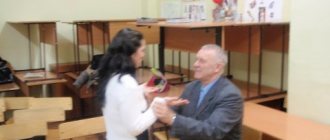Constructive thinking is the weapon of any adult. It helps to solve difficult life situations and get out of them with minimal losses. Precise definition: the ability to think productively, unemotionally. The skill is very useful, but the main injustice is that some people are gifted with this type of thinking by nature, while others can only dream of this superpower.
What does constructive thinking look like?
Constructive thinking is, in a sense, a way of life. It can be seen in the example of human reactions to difficult situations. For example, two maids finished their shift at a hotel and found themselves stuck in an elevator late at night. Both suffered from mild claustrophobia. Both of them were in a hurry about their business. And for both the situation was physically unacceptable. One of them panics, hits the buttons, starts wailing, screaming, trying to attract attention. The other, meanwhile, tries to remain calm. She monitors her breathing. She tries to call the elevator operator using the button. When the button did not work, the woman took out her mobile phone, called a friend who lived nearby, and after 15 minutes they were released.
What is the difference between the types of thinking of these women? The first one's thoughts were chaotic and not constructive. She felt sorry for herself - after all, she was claustrophobic, and she was in a hurry. Giving in to her emotions, she did not allow her mind to work on the situation. But she also had a mobile phone in her purse. The second woman did not allow herself to panic. She took it upon herself to solve the problem and did not panic when the elevator button did not work. If she didn't have a phone, she would still find a way out.
In any situation, constructive thinking begins where emotions end. Feelings prevent a person from adequately perceiving the situation. This type of thinking is more characteristic of men than women. The reason for this is different hormonal sets. Estrogen, with which women are thoroughly saturated, sensitivity at a certain time of the cycle distances them from constructiveness. Women often give in to impulses and act under the influence of emotions. Such actions have no logical justification and, over time, become a matter of regret.
Men are also devoid of constructiveness, because there are very sensitive, vulnerable representatives of the stronger sex. Just like there are women who carry a “golden head” on their shoulders that can solve any problem.
Consequences of destructive conflict
The Latin word destructio means destruction, restructuring of something. In psychology, destructiveness means personality traits, the destructive influence of an individual not only on himself, but also on the outside world. As a personality quality, destructiveness develops when a person has failed to self-realize and his energy cannot find a way out.
A destructive conflict arises when its participants cross the boundaries of what is socially acceptable or aggravate a tense situation.
A destructive conflict does not bring any benefit; on the contrary, it threatens not only relationships, but also a person’s health and even life. Disagreements in this conflict may affect innocent people who have become accidental victims of circumstances. In a destructive conflict there are no winners; both sides become victims who have lost control of themselves and want to destroy each other morally and physically.
This type of conflict causes depression, reluctance to be active and take part in the social life of the team. In the literal sense of the word, each participant can be “wounded” in this verbal battle and receive neurosis.
A terrible consequence of this conflict can be a suicide attempt, at best - tension and disappointment, which over time lead to mistrust even in relation to close people, cause symptoms of neurosis and, in extreme cases, lead to personality degradation.
Destructive conflicts are among the most dangerous types with constant rivalry and unproductive communication, with feelings of resentment and dissatisfaction with work. They negatively affect the psychological climate of the team, the corporate culture, and interfere with the work of even those who do not take part in them, says the HeadHunter research service. She conducted a survey among 5,200 employees of Russian companies and 40% of respondents confirmed the fact of depression due to conflicting parties.
However, a destructive conflict by its nature can have a favorable outcome, and here experts name constructive ways to resolve it. First of all, this is a limitation of contact between the parties - in an organization this could be a division of powers or personnel changes, it is possible to set a common goal that will force participants to search for a common language, the introduction of a system of sanctions in force in case the dispute cannot be settled. It is very important to transform the destructive power of a dispute into a constructive one, so that it is possible to hear each other and come to mutual agreement and understanding.
Where to get constructive thoughts
First, let's figure out what this type of thinking gives a person.
- The ability to balance the emotional pendulum and not succumb to negativity. The person will feel calm and protected. Behind constructive thinking is like behind a stone wall.
- This helps to find a way out of the most difficult situations.
- This kind of thinking often changes a person's life. He acquires a similar skill, realizes that there is something in his life that does not suit him, and begins to work in this direction. Logic will no longer allow you to avoid changes or find reasons for inaction. This is how positive change begins: with a thought. With the right thought.
Anyone, even the most emotional and inert person, can learn to think constructively. Try to remember a person around you who has this ability. Imagine a difficult situation and think about what he would do. Try to put yourself in his place and adopt the way of thinking. Emotions away, just cold reason.
You can practice both in fictitious situations and in real ones. A little work on your thinking, and the skill will become a habit.
Constructive thinking is characterized by:
- Impartiality.
- Logics.
- Subsequence.
- Thoughtfulness.
- Comprehensive assessment of the situation.
- Building a plan.
- Assessing prospects.
- Forecasting developments.
- Lack of emotions.
The main component of such thinking is a cool mind. Emotions do not allow a person to consider a situation from all sides, see perspectives and evaluate all possible options, choosing the best.
One does not exist without the other
Communication, social interaction is a very complex process. It is impossible to form a dialogue between two people by subordinating it only to the principles of constructive interaction and completely bypassing other aspects. The main task of both parties is to make efforts to ensure that the constructive as the most productive method dominates, in which case the result will be beneficial for all parties concerned.
The unity of methods for establishing contact forces us to be very careful about the activation of cognitive activity. Of course, this is most important when it comes to the development of the younger generation. The educational and training process should be based on the use of constructive approaches as the only correct ones. This allows you to control not only emotionality, but also cognitive activity. With the right approach, constructive techniques can effectively prepare a child for the fact that there may be failures in life. At the same time, a constructive approach allows us to consolidate mechanisms for regulating behavior that take into account both the meaningfulness of actions and the personal aspects of the participants in the situation.
How to think constructively
You can master the technique of a constructive way of thinking using the technique of renouncing emotions. Its essence is to completely rid yourself of emotions for a while. Just after hearing unpleasant news, most people immediately form a chain of negative thoughts in their heads, which plunge them into the abyss of dark feelings. No productivity.
The first step after receiving any information should be its comprehensive processing. Of course, if the information concerns you and can somehow affect the existing situation. There is no need to use logic and comprehend an anecdote, funny story or gossip about a colleague.
Example: a man is informed that his beloved wife had dinner in a cafe with an unknown man.
Destructive thinking.
“She’s definitely cheating on me. I'm a cuckold now and my friends already know. I'm disgraced. I will never forgive her. She won't admit it and will find an excuse. I loved her so much! I will also find a mistress - it will be fair. I don’t want to see her. I’m going on a spree.”
Such behavior and reaction would definitely lead to a scandal. And repeated situations of this type will lead to divorce. And all because of the inability to think constructively. Unnecessary emotions, far-fetched situations. And the wife just went to show her new colleague the cafe next to the office. They were just talking about work. He could be a deeply married man or even a man with unconventional views on women.
Constructive thinking.
“My wife will definitely give me a reasonable explanation for this case. It is unlikely that she will publicly share lunch with her lover in a cafe. The situation is unpleasant for me because I love my wife and am a little jealous of her. But she never gave me any reason to doubt. We will talk and find out everything, until this moment the situation will look to me like Schrödinger's cat. And now I don’t have a single reason to worry. It could be her distant relative or colleague. She will return home and we will calmly discuss everything. There’s no point in going over possible options in your head.”
Don't panic: assess the situation. Yes, the news is unpleasant for him. But the man pulled himself together; he would not burn his nerve cells in vain. He will not cause a scandal by screwing himself up. He accepted the fact that there was not enough information to draw any conclusions. Constructive thinking in action.
Features of the development of constructive activity of preschool children
Children, like adults, before starting to create a design, formulate their idea for themselves (and in younger preschool age, for those around them). As soon as a child has an idea, he already looks around to see what available tools or details will help him realize it.
The original plan is not always kept in the focus of the “designer’s” attention. Interest may dry up or plans may change: “Let it not be a car, but a rocket,” “I don’t want to build, I’ll draw!”
This is one of the features of the constructive activity of a preschooler - not every idea finds its implementation. Building takes effort, and the baby needs encouragement and support to see it through.
The development of constructive activity in preschool age occurs in two directions:
- construction of buildings for the game
- creation of image models
In the second case, constructive model activity takes place. An example of such design is the assembly of models from ready-made sets of wooden or plastic parts.
Buildings for the game is a responsible matter. Children design them to perform desired functions. If this is a bridge, then it must be stable so that cars can be rolled along it. If it is a “bus”, then it should have enough space for all players and you need to arrange a separate cabin for the driver.
Types of constructive activities for preschoolers
In design, two types can be distinguished, available at preschool age:
- technical
- artistic
Technical design is based on the real characteristics of objects, taking into account the shape and structure. The child builds a house from cubes and bricks and at the same time makes sure to highlight the doorway and designate the window.
The technical type includes the assembly of various models, where the parts are fastened together using grooves or bolts. In this form, a creative approach is used, but taking into account real relationships.
As for artistic design, it is more important for the author to convey not the ratio of quantities or the structural content of the object, but its character and emotional content. For example, the boys decided to create the image of a gorynych snake by adapting a children's table as a body, laying out a tail from cubes, and placing floor lamps instead of heads. In this case, the constructed image is designed to reflect the essence of a frightening fairy-tale character.
Forms of design in preschool age
Depending on what degree of accuracy or independence a preschooler needs to show in making his model, developmental psychology distinguishes four forms of constructive activity:
- according to the model
- by design
- according to the conditions
- frame construction
With a sample, kids begin their first steps in this type of activity. Parents, playing with their children, build either turrets or houses, and encourage them: “Now make a tower like this.” The child watches how the adult assembles the structure, sees the completed object and strives to repeat the same actions.
In early preschool age, such models are the simplest. But designing according to a model is gradually gaining complexity. Moreover, in some cases it can be the most difficult form of creating a structure. For example, by providing an older preschooler with an assembled model of an airplane and a set of parts, you can set the task of assembling the same toy. The child has a difficult job ahead of him. You need to figure out what parts are used in the model, how they are fastened together, and in what order to assemble, and then begin to carefully complete the task.
Let's start implementing the plan
The design according to plan also differs with different levels of complexity . That is, the child does not need to maintain the accuracy of the sample; he can create everything at his own discretion. On the one hand, this simplifies the task, but on the other, it complicates it. You need to come up with everything yourself, from the idea and selection of materials, what to build from, to the final appearance of the building.
Older preschoolers have such global plans that they cannot do without preliminary schematic planning. Have you noticed how one child draws in the sand and explains to another where and what to place in the future model?
Design according to conditions can be compared to a plan, but someone else’s. When an adult sets conditions for a preschooler to build a house for dolls from Lego parts, but so that each doll has its own room and a common room for all, this is the adult’s intention. The child will have to pay close attention to the conditions and figure out how to complete this task.
The conditions set for the child often make it easier for him to start designing. Many children get lost at the stage of searching for an idea of what to build or what model to create.
Frame construction is a special approach to completing a task that guides the child’s mental activity. This form of activity focuses on identifying the main elements of the future model and frame assembly. Once the base is ready, you can begin filling with smaller parts.
The use of a frame in design is an almost adult approach to creating a model, requiring analytical and synthetic mental activity and developing spatial thinking.
Thinking like a strategist
Have you ever wondered how the mindset of a millionaire or a successful entrepreneur differs from the mindset of an ordinary person? Why do some people succeed in everything in life, while others cannot achieve a promotion even with an excellent education and work experience? Everything always starts with a thought. And the ability to think is decisive in any field.
How do these short, homely men think, next to whom the beauty queen walks? How do ugly women manage to get real Apollos as husbands? How does a boy from an orphanage become a millionaire? What is the secret of success? When there are no prerequisites, when no one helps, how do they manage to achieve their goals? Let us examine in detail the thinking of a strategist.
- See the goal, consider it comprehensively.
- Realize the degree of importance for yourself.
- Assess your real capabilities, taking into account the complete lack of luck and help from other people. For strategists know that in this life they can only rely on their own strength.
- Calculate options for the development of events.
- An important rule of successful people: you should always have a backup plan. Plan b". If it doesn’t work out right away, they will use this fallback option. It is also worth developing a plan “B” - and so on at least until the middle of the alphabet. Often people achieve their goals not on the first try and not on the second. Sometimes it takes the thousandth option to get all the way to the end.
- Next comes a promise to yourself that you will not give up. Now that the options have been calculated, you don’t have to be upset about failures. The strategist foresaw this and prepared a plan B. There is no disappointment component. Emotions can lead you astray. They are good in certain situations, but not here.
- A strategist knows how to make emotions serve him. There are only two options: eliminate them completely, using reason rather than feelings, or use them. You can hang a photo of your least favorite fat relative on the refrigerator - and this will force you to stick to your diet. Every day you can remember your difficult childhood in poverty and go to work, climb the career ladder. Man considers himself a rational being. But when his emotions control him, he looks no better than a kitten chasing its tail in rage. Destroy or subjugate: this is what successful people do with their feelings.
- Next, the strategist’s thinking comes into play and the details are thought out.
- The implementation stage begins. The strategist at this stage continues to be guided by his own plan. Analyzes it. Makes adjustments if necessary.
How to understand that you have a chaotic type of thinking
Having read the article to this point, everyone was already thinking: “What’s wrong with me? Do I have constructive thinking? It is so simple. Or not?". To answer this question, analyze how you usually speak and solve problems.
A simple test will help you understand your way of thinking:
- During a conversation, are you distracted by insignificant details and trifles?
- How long does it take you to explain your thoughts?
- Do you start the story with the Mesozoic era? (This means whether you start it from the very essence or, as in the fairy tale: “We lived, we didn’t grieve”).
- Are you distracted by extraneous thoughts, changing the topic of conversation?
- Do you ever analyze other people's thoughts about your idea? (People who are closed to other people's opinions are limited. It is not necessary to accept someone else's point of view, but if you are offered an alternative option that may turn out to be productive advice, an intelligent person will definitely listen).
- Don't plan your day in advance?
If you answered yes to at least one of the questions, you should work on yourself. This means that your type of thinking is close to chaotic. More than three positive answers mean that your thinking is chaotic.
Negative factors in communication
Conducting a meaningful conversation is not such a difficult task. But despite this, people often encounter obstacles that prevent them from developing an interesting conversation with their interlocutor.
Among the main factors that negatively affect communication are:
- Presence of a commanding tone. By using words in a motivating mood, a person unconsciously turns the opponent against himself. To soften the atmosphere of dialogue, all orders must be replaced with requests. Example: Instead of “Bring it,” you should use “Could you do me a favor and pass the book?”
- Imaginary competition. If a person shares his successes, it means that he wants people to be happy for him. Many people in such situations try to demonstrate their own achievements by devaluing the merits of their opponent. No one wants to be humiliated, so such a conversation will quickly come to an end.
- Quickly change the topic of conversation. If your interlocutor's story is boring, you should not tell him about it or abruptly change the direction of the conversation.
- Denial of problems. If a person’s experiences seem trivial, you should not tell your interlocutor about it.
- Intrusive "psychotherapy". During a conversation, you should not diagnose the motives of your opponent’s behavior. Example: “You are jealous,” “You are afraid.” Even if comments are justified, their presence in a conversation can cause aggression or resentment.
- Tactless and intrusive questions. If the interlocutor does not want to share information, you should not persuade him. Pressure on an opponent can provoke a conflict.
- Value judgments. Your views with your opponent will not always coincide. In order not to provoke a scandal, you should not use arguments for or against in a conversation. It is better to focus on facts.
- Lexicon incompatibility. If a person uses a large amount of slang and jargon, the interlocutor may not understand him, so he will not want to continue the one-sided monologue.
READ Leadership styles: features and disadvantages of different management models
Development of thinking
Practical exercises will help you develop the right way of thinking. What is needed for this? Just start. With the understanding that it won’t work out the first time or even the hundredth time. You will practice for a long time before you notice that emotions no longer rule your life.
Start with simple everyday situations. I don't feel like washing dishes. Analyze the situation, engage constructive thinking. Perhaps you will realize that it is more advisable to wash the dishes immediately after eating, without leaving them for later under the pretext of soaking and busyness. Moreover, washing dishes is a time of relaxation. When you wash a plate, think only about the plate. Learn to turn off your thoughts. Afterwards, praise yourself for washing right away.
Any unpleasant situation can and should be used for good. And constructive thinking will help with this.
Grouping topics
For convenience, you can mentally compile a library of topics. If you are talking about work, then the topic should not switch to personal issues. If you analyze the situation, do not think about the upcoming renovation or movie. Clear your internal dialogue of debris. Only pure constructivism of thinking. When you are no longer working, but just walking in the park, you can allow yourself to think about something detached. But even then, do not forget about control. There should be no porridge in your head - pure thoughts on a certain topic. When it is exhausted, move on to another. Thinking needs control.
How constructive thinking affects health
There are several changes that will happen to you if you learn constructive thinking. Everyone who took such training or mastered the art on their own spoke about them.
- The person becomes calmer. His thoughts come into order. He begins to plan his day.
- People around notice changes in the gait, posture and gestures of such people. But this does not happen immediately. Psychologists notice such things in their patients who have persistently trained their way of thinking for several weeks.
- Panic attacks and neuroses recede, and VSD partially goes away. A person no longer gives in to panic, does not look for diseases that he heard about yesterday from the news.
- Many women and men finally manage to go on a diet and lose excess weight. People begin to control themselves better.
- Some somatic diseases and symptoms of asthenia disappear.
- Sleep improves and a person feels more alert. Especially if you paid attention to your health: included sports and proper nutrition in your daily to-do list.
- People who were terrified of doctors get rid of their fears and undergo preventive examinations on time.
How to learn to convert positive into constructive
Constructive thinking almost completely eliminates negativism. A person cannot give in to sad thoughts and feel sorry for himself, because this is of no use, like milk from a goat. Wanting to invigorate and motivate itself, the mind will rather find positive moments in any situation. And positivity turns into constructivism. In fairness, it is worth noting that the engine can be not only a carrot, but also a stick. But it is wiser to use positive reinforcement more often - you are not your own enemy.
Example. You are tired and want to put off some work until tomorrow. But this will affect your earnings. Positive reinforcement: You figure out what to buy for yourself with the extra money. This idea brings joy. You don't want to lose her. Here's an incentive to work on the weekend! Next is a simple action plan to get everything done: organizational issues. So the positive turned into constructive.
Stages of constructive activity
Whatever object a preschooler plans to build, certain knowledge and skills are needed. Even when building the most ordinary tower from cubes and cylinders, you need to take care of its stability. And for this, it is important to place the most voluminous part at the base. Therefore, constructive activity occurs in several stages:
- Examination of a possible structural material: shape, size, characteristic features, what functions it can perform (a cube is stable, all sides are equal, can serve as a base; a cone is suitable for completing a building, can be used as a part of a fence, etc.)
- Determining the main components of the object, designating the shape and spatial dimensions (We are creating a car for the game: only the driver will sit in the cab, and in the back there will be two people at the side on the right and left).
- Constructive actions: sequential construction of the model (laying out a series of cubes as a body outline, assembling a wall from LEGO parts, connecting plates for a bridge, etc.)
- Holistic perception of the result obtained and correlation with the initial plan.
- Corrections and additions to the design if a discrepancy with the idea is found.
The listed stages are observed both in the creation of simple buildings by children and in the construction of complex models by older preschoolers. Already at 4 years old, a child, surprising his parents, is able to conduct a primary analysis that the bridge consists of a brick, another brick and a plate.
Five-year-old children are attentive to the shape and size of parts. They acquire analytical skills and will not only tell you what kind of structure it is and what parts it consists of, but can also suggest improvements to the building.
At 6-7 years old, children fairly fully analyze the structure of the model, identify the main and auxiliary parts, take into account the special qualities of the parts (stability, length, flexibility, etc.), and plan the sequence of creating the structure.
Methods
Let's look at techniques that will help you learn constructive thinking.
- Complete control over emotions.
Let it upset you that your boss yelled at you in the morning. Away with self-pity and theatrical digressions. You simply solve important problems, go to his office and resolve the situation to the end.
- “No” to fear.
If you feel a symptom of any disease, turn off the panic. What symptoms should the patient have? Do you have them or is it all the result of wild imagination? If symptoms persist for a while and there is no explanation, just get checked. Don't panic and write a will. Feelings are almost always unnecessary. Because they are not constructive.
- Plan your time from start to finish.
You should always know what you will be doing tomorrow and in a month. If plans change, adapt, keep the basics. It should be prepared in advance. It goes like this: a lot can change, but even if the world ends, you'll still do 50 sit-ups and clean the house. This is the basis of constructive thinking.










